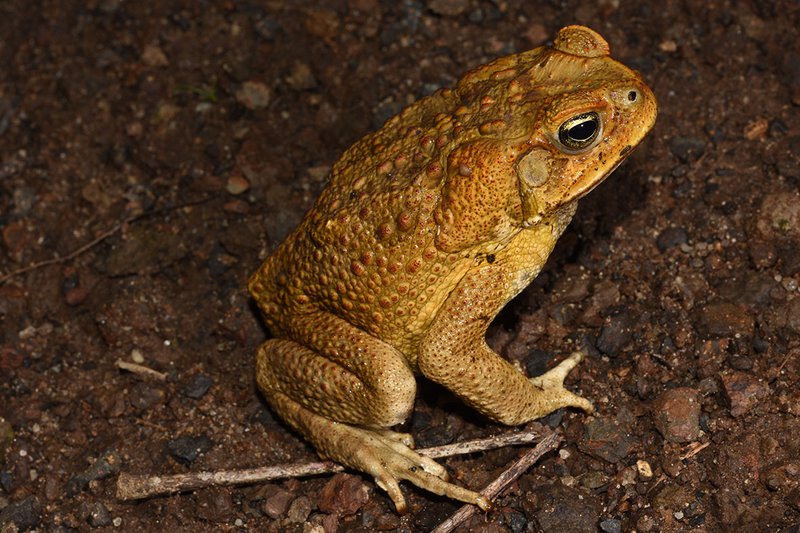The cane toad (Rhinella marina), also known as the giant neotropical toad or marine toad, is a large and invasive species of toad native to South and Central America. It was introduced to various regions around the world as a biological control for pests in sugarcane crops. However, these introductions often had unintended consequences, and the cane toad has become an infamous invasive species in many areas.
Here are some key characteristics and facts about cane toads:
- Size: Cane toads are relatively large, with adults reaching sizes of 4 to 6 inches (10 to 15 cm) in length.
- Coloration: They have a rough, warty skin that can be various shades of brown, gray, olive, or reddish-brown. The skin may also have distinct markings.
- Venom: Cane toads are known for their toxic skin secretions, which can be harmful or even deadly to predators. The toxin, known as bufotoxin, is present in glands on the skin and is a defense mechanism against predators. Domestic animals and wildlife that attempt to consume the toads may suffer severe poisoning.
- Invasive Species: Cane toads have been introduced to many regions, including Australia, Hawaii, the Caribbean, and parts of Southeast Asia, with negative ecological impacts. They are voracious eaters and can outcompete native species for food.
- Reproduction: Cane toads are prolific breeders. They lay large numbers of eggs in water bodies, and the tadpoles that hatch from these eggs can survive in a variety of aquatic environments.
- Ecological Impact: In areas where cane toads have been introduced, they can have detrimental effects on local ecosystems. They compete with native species for resources, and their toxicity can lead to declines in populations of predators that are not adapted to dealing with such toxic prey.
Efforts have been made to control the spread of cane toads in some regions, but their adaptability and reproductive capabilities make them a challenging invasive species to manage. The introduction of cane toads to new areas highlights the importance of carefully considering the potential ecological consequences before introducing non-native species for pest control or other purposes.
